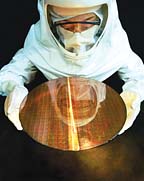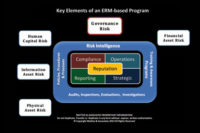Will Security Keep Up?

In my youth I was always intrigued by electric coil relays and the control capabilities that they presented. As many people who have been involved in the systems industry for at least 20 years, the electric coil relay can be your best friend as well as your worst nightmare. Because of the many different types of relays, such as timer relays, I have always found them fun to work with. The flexibility that they offered made it possible to do some amazing things.
However, if a relay network design was implemented and not documented very well, it could become my worst nightmare. There was nothing worse than attempting to troubleshoot a relay network without proper documentation. Well, as technology advanced, relays and their little brother, the transistor, became incorporated onto the circuit boards of integrated circuits. The advancement allowed firmware and/or software to control the integrated circuits and subsequent electronics.
Technological advances have continued at an unbelievable speed. The speed of transistor-filled processors (computers) now can control a limitless number of relays at an incredible speed. Computers are in every aspect of the security industry. Now instead of hardwire wiring relay networks to perform a process, a computer containing software is programmed to run the processes with very few limitations.
Computers have become such a major asset in a security system that it is nearly impossible to perceive a system without one. The power of the computer, as well as the hardware, firmware and software that comprise the system as a whole, has given the security industry the flexibility to meet the ever demanding needs of the end users. The integration of digital video and card access control has presented a system capability that provides for the ease of controlling personnel movement and the visual monitoring of critical assets. The ability to automatically tie an event of the card access control system with a recorded video image of a predefined incident has made the security system one of the most valuable tools an end user has to protect people and property.
I have read a wealth of columns addressing the subject of the security system and its relationship to the information technology sector. The story of the security industry and the IT industry melding together is absolutely true. The communication protocols used in the IT industry are now standard in the security industry.
A couple of decades ago the telecommunication industry started an attempt to standardize the methods and practices of the industry. The standards would be largely overseen by a professional organization and various standards committees for adoption by the industry as a whole. These data/telecommunication standards continue to become more refined every year, thus creating an industry that is identical worldwide. Therefore if the security system is going to share, or become part of a larger data/telecommunications network, it will be necessary for the IT professional to manage how the security system is going to integrate and operate on the overall network.
Unfortunately, the integration of a security system into the data/ telecommunications network has itself become a security issue. With networks constantly under attack by external and even possibly internal sources, the integrity of the integrated security system as a whole becomes more problematic. IT professionals generally find their hands full managing the overall network and do not have the time required to manage and operate the integrated security system. Moreover, the security professional generally does not have the level of knowledge necessary to manage the complexity of the network technology. The IT professional and the security professional will inevitably either become the same person through expanded education requirements, or the two professions will cross educate in order to have a cooperative working knowledge and understanding of each other’s industries. Security and IT have already merged to an inseparable degree, and soon, if not already, their respective managers will have to follow suit.
Looking for a reprint of this article?
From high-res PDFs to custom plaques, order your copy today!




.jpg?height=200&t=1642454744&width=200)




